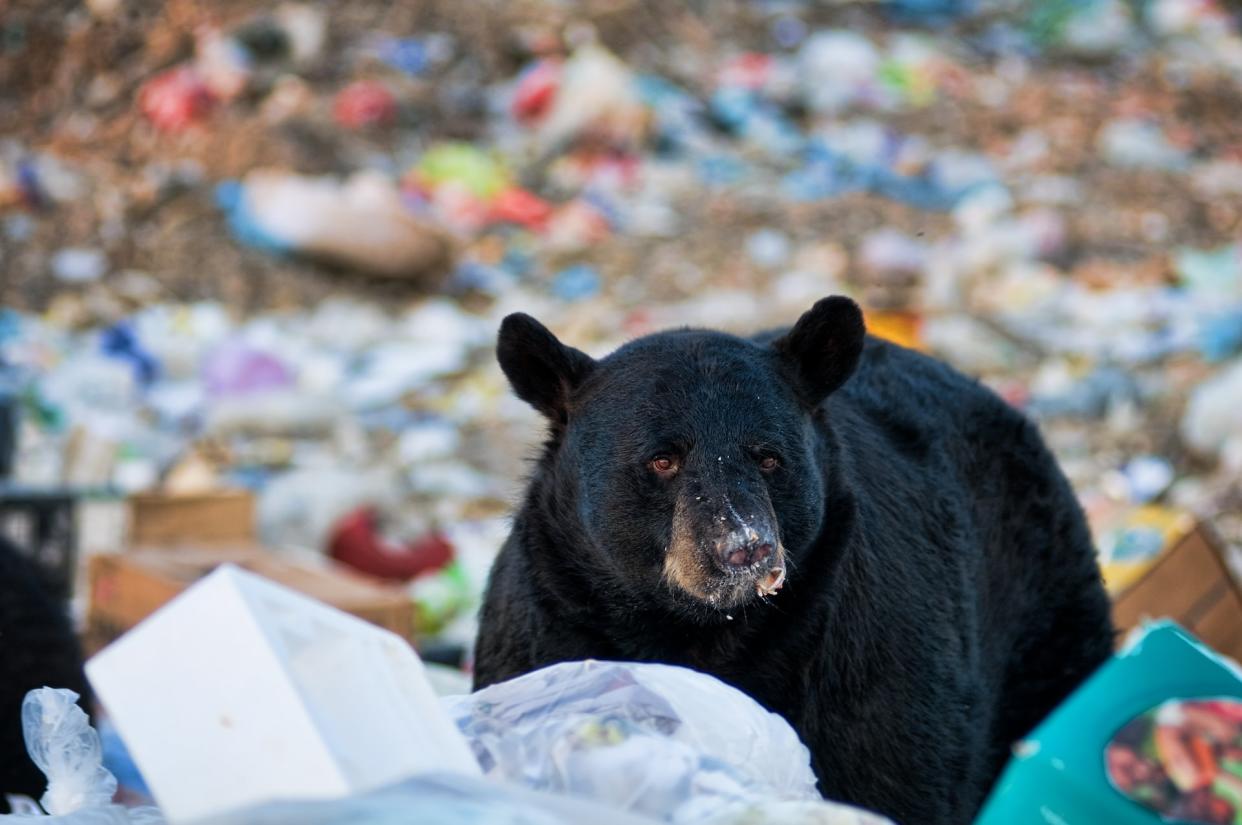Wildlife authorities raise concerns about family of bears living off garbage at landfill for decades: 'It's not normal'

More than two dozen black bears are living off a Colorado landfill, creating a difficult situation to solve.
What's happening?
Since the Pitkin County Solid Waste Center dump was created in the 1960s, bears have used it as a scavenging site, The Aspen Times reported in February. There are now 25 to 30 bears that rely on its organic waste for food.
The calorie-dense waste has helped the bears boost their population; instead of one or two cubs, sows are raising litters of three or four.
The bears' reliance on the landfill has also changed their behavior. They are not teaching their cubs to eat berries, acorns, and other things found in nature, because that would take much more time and energy.
According to the Times, even an electric fence — reportedly the only thing that could keep the bears out — constructed around the dump near Aspen would be ineffective. The bears would likely continue to seek human food waste in other nearby areas, foraging in trash cans, pet food bowls, and bird feeders.
"They're smart. They're not dumb. That's why they're there," Colorado Parks and Wildlife district wildlife manager Kurtis Tesch said about the bears at the landfill, per the news outlet.
Watch now: Allbirds director reveals details on world's first carbon-free shoe
Why is the bears' living off the landfill important?
Another issue is that the garbage is covered in shredded tires or other materials multiple times per week in accordance with state law for buried trash, the Times reported. The creatures ingest microplastics and other pollutants — including plastic bags — with their trash meals, which can be deadly.
"It's not normal. It's purely the amount of food source that is available. If it was a limited food source, the older [male] bears would chase the younger ones off and keep it for themselves," Tesch said. "But since there's such a large, vast amount of supply there, they don't feel their food sources are threatened."
Landfill staff can scare off most of the bears if necessary, according to the Times. Younger ones that haven't yet reached that level of understanding with the employees occasionally get shot with rubber bullets.
Their habituation to humans and human food, even if it is waste, has led to increased interactions between the bears and people. If the former threaten the latter, the bears can be relocated or euthanized. Since 2019, the Times said, 22 bruins in the county have been relocated and 64 euthanized.
What's being done about the landfill?
It's likely that a fence will be constructed at some point only because Tesch said euthanizing the bears is not an option. That will be costly and, again, could create issues with surrounding neighborhoods.
County commissioners were also skeptical that a fence would be foolproof, according to the Times, and worried it could create a wildfire risk. Enclosing the facility could carry a $2 million price tag plus a new full-time position necessary to maintain the fence.
The situation is also a reminder of the importance of managing our lands and interacting with wildlife in a respectful manner, including by giving animals plenty of space when we encounter them in the wild.
The Times also reported the bears had been unintentionally ingesting plastic as they foraged in the landfill. While the series of events that led to the current situation is complex, ditching single-use plastics in favor of reusable items can help reduce problematic toxic waste.
Join our free newsletter for cool news and cool tips that make it easy to help yourself while helping the planet.

